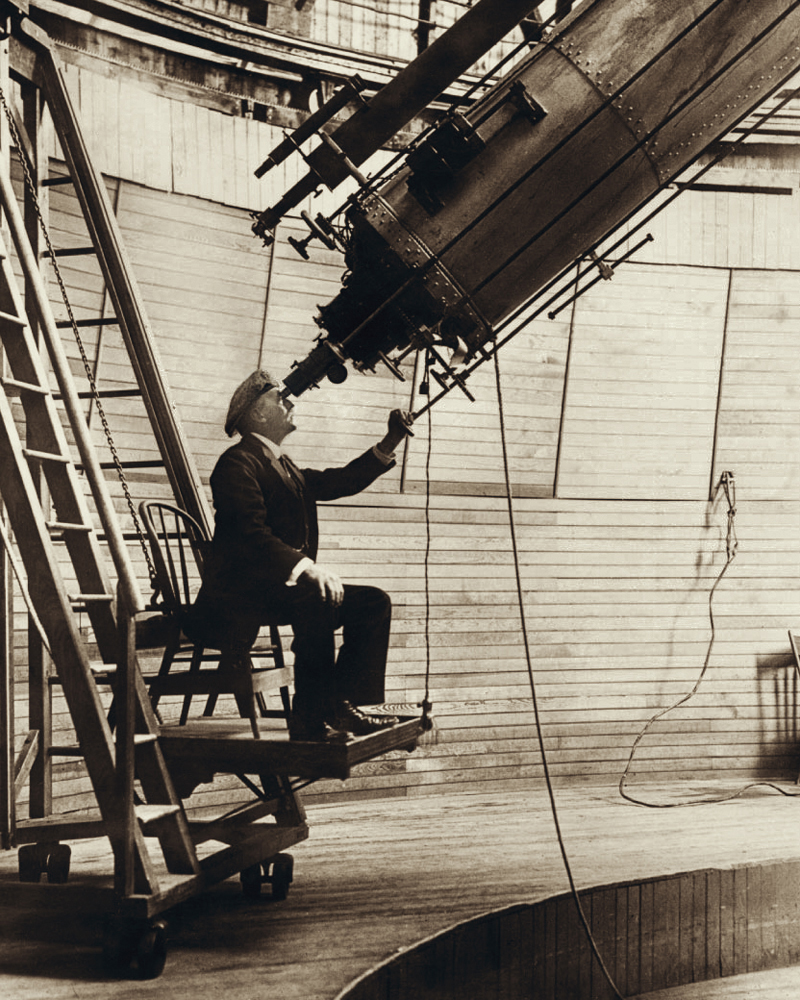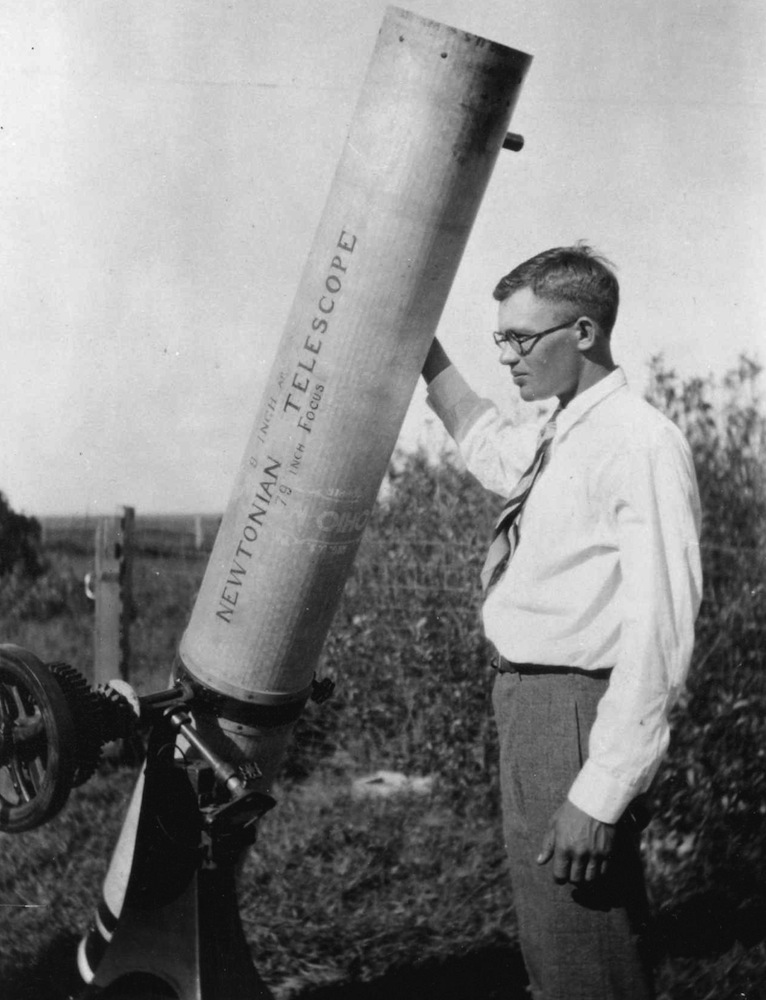|
Trans-Neptunian
A trans-Neptunian object (TNO), also written transneptunian object, is any minor planet in the Solar System that orbits the Sun at a greater average distance than Neptune, which has a semi-major axis of 30.1 astronomical units (au). Typically, TNOs are further divided into the classical and resonant objects of the Kuiper belt, the scattered disc and detached objects with the sednoids being the most distant ones. As of October 2020, the catalog of minor planets contains 678 numbered and more than 2,000 unnumbered TNOs. The first trans-Neptunian object to be discovered was Pluto in 1930. It took until 1992 to discover a second trans-Neptunian object orbiting the Sun directly, 15760 Albion. The most massive TNO known is Eris, followed by Pluto, , , and . More than 80 satellites have been discovered in orbit of trans-Neptunian objects. TNOs vary in color and are either grey-blue (BB) or very red (RR). They are thought to be composed of mixtures of rock, amorphous ... [...More Info...] [...Related Items...] OR: [Wikipedia] [Google] [Baidu] |
List Of Trans-Neptunian Objects
This is a list of trans-Neptunian objects (TNOs), which are minor planets in the Solar System that orbit the Sun at a greater distance on average than Neptune, that is, their orbit has a semi-major axis greater than 30.1 astronomical units (AU). The Kuiper belt, scattered disk, and Oort cloud are three conventional divisions of this volume of space. , the catalog of minor planets contains 901 numbered TNOs. In addition, there are more than 3,000 unnumbered TNOs, which have been observed since 1993. This list consists of all types of TNO subgroups: classical Kuiper belt objects, also known as "cubewanos", the resonant trans-Neptunian objects with their main and higher-order resonant subgroups, the scattered disc objects (SDOs), and the extreme trans-Neptunian objects including the ESDOs, EDDOs, and sednoids, which have a semi-major axis of at least 150 AU and a perihelion (closest approach to the Sun) greater than that of Neptune. The list also contains several cent ... [...More Info...] [...Related Items...] OR: [Wikipedia] [Google] [Baidu] |
List Of Unnumbered Trans-Neptunian Objects
This is a list of unnumbered trans-Neptunian objects (TNOs) first observed since 1993 and grouped by the year of principal provisional designation. The data is sourced from the Minor Planet Center's (MPC) ''List of Trans Neptunian Objects'' and ''List Of Centaurs and Scattered-Disk Objects''. These objects will eventually be numbered as secured discoveries with an official discoverer determined by the MPC. Until then, additional observations are needed to sufficiently decrease an object's orbital uncertainty. , there are 3,141 unnumbered objects, defined here as minor planets with a semi-major axis larger than 30.1 AU (Neptune's average orbital distance from the Sun). The list also contains information from "Johnston's Archive", such as an object's diameter, its dynamical class and binary status with the satellite's diameter, as well as its albedo, spectral taxonomy and B–R color index. Members of the extreme trans-Neptunian objects ( ESDOs, EDDOs and sednoids) ... [...More Info...] [...Related Items...] OR: [Wikipedia] [Google] [Baidu] |
Planets Beyond Neptune
Following the discovery of the planet Neptune in 1846, there was considerable speculation that another planet might exist beyond its orbit. The search began in the mid-19th century and continued at the start of the 20th with Percival Lowell's quest for Planet X. Lowell proposed the Planet X hypothesis to explain apparent discrepancies in the orbits of the giant planets, particularly Uranus and Neptune, speculating that the gravity of a large unseen ninth planet could have perturbed Uranus enough to account for the irregularities. Clyde Tombaugh's discovery of Pluto in 1930 appeared to validate Lowell's hypothesis, and Pluto was officially named the ninth planet. In 1978, Pluto was conclusively determined to be too small for its gravity to affect the giant planets, resulting in a brief search for a tenth planet. The search was largely abandoned in the early 1990s, when a study of measurements made by the '' Voyager 2'' spacecraft found that the irregularities observ ... [...More Info...] [...Related Items...] OR: [Wikipedia] [Google] [Baidu] |
Discovery Of Pluto
Following the discovery of the planet Neptune in 1846, there was considerable speculation that another planet might exist beyond its orbit. The search began in the mid-19th century and continued at the start of the 20th with Percival Lowell's quest for Planet X. Lowell proposed the Planet X hypothesis to explain apparent discrepancies in the orbits of the giant planets, particularly Uranus and Neptune, speculating that the gravity of a large unseen ninth planet could have perturbed Uranus enough to account for the irregularities. Clyde Tombaugh's discovery of Pluto in 1930 appeared to validate Lowell's hypothesis, and Pluto was officially named the ninth planet. In 1978, Pluto was conclusively determined to be too small for its gravity to affect the giant planets, resulting in a brief search for a tenth planet. The search was largely abandoned in the early 1990s, when a study of measurements made by the ''Voyager 2'' spacecraft found that the irregularities observed in U ... [...More Info...] [...Related Items...] OR: [Wikipedia] [Google] [Baidu] |
Planets Beyond Neptune
Following the discovery of the planet Neptune in 1846, there was considerable speculation that another planet might exist beyond its orbit. The search began in the mid-19th century and continued at the start of the 20th with Percival Lowell's quest for Planet X. Lowell proposed the Planet X hypothesis to explain apparent discrepancies in the orbits of the giant planets, particularly Uranus and Neptune, speculating that the gravity of a large unseen ninth planet could have perturbed Uranus enough to account for the irregularities. Clyde Tombaugh's discovery of Pluto in 1930 appeared to validate Lowell's hypothesis, and Pluto was officially named the ninth planet. In 1978, Pluto was conclusively determined to be too small for its gravity to affect the giant planets, resulting in a brief search for a tenth planet. The search was largely abandoned in the early 1990s, when a study of measurements made by the '' Voyager 2'' spacecraft found that the irregularities observ ... [...More Info...] [...Related Items...] OR: [Wikipedia] [Google] [Baidu] |
Scattered Disc
The scattered disc (or scattered disk) is a distant circumstellar disc in the Solar System that is sparsely populated by icy small solar system bodies, which are a subset of the broader family of trans-Neptunian objects. The scattered-disc objects (SDOs) have orbital eccentricities ranging as high as 0.8, inclinations as high as 40°, and perihelia greater than . These extreme orbits are thought to be the result of gravitational "scattering" by the gas giants, and the objects continue to be subject to perturbation by the planet Neptune. Although the closest scattered-disc objects approach the Sun at about 30–35 AU, their orbits can extend well beyond 100 AU. This makes scattered objects among the coldest and most distant objects in the Solar System. The innermost portion of the scattered disc overlaps with a torus-shaped region of orbiting objects traditionally called the Kuiper belt, but its outer limits reach much farther away from the Sun and farther above an ... [...More Info...] [...Related Items...] OR: [Wikipedia] [Google] [Baidu] |
Extreme Trans-Neptunian Object
An extreme trans-Neptunian object (ETNO) is a trans-Neptunian object orbiting the Sun well beyond Neptune (30 AU) in the outermost region of the Solar System. An ETNO has a large semi-major axis of at least 150–250 AU. Its orbit is much less affected by the known giant planets than all other known trans-Neptunian objects. They may, however, be influenced by gravitational interactions with a hypothetical Planet Nine, shepherding these objects into similar types of orbits. The known ETNOs exhibit a highly statistically significant asymmetry between the distributions of object pairs with small ascending and descending nodal distances that might be indicative of a response to external perturbations. ETNOs can be divided into three different subgroups. The scattered ETNOs (or extreme scattered disc objects, ESDOs) have perihelia around 38–45 AU and an exceptionally high eccentricity of more than 0.85. As with the regular scattered disc objects, they were likely for ... [...More Info...] [...Related Items...] OR: [Wikipedia] [Google] [Baidu] |
Minor-planet Moon
A minor-planet moon is an astronomical object that orbits a minor planet as its natural satellite. , there are 457 minor planets known or suspected to have moons. Discoveries of minor-planet moons (and binary objects, in general) are important because the determination of their orbits provides estimates on the mass and density of the primary, allowing insights into their physical properties that are generally not otherwise accessible. Several of the moons are quite large compared to their primaries: 90 Antiope, Mors–Somnus and Sila–Nunam (95%), Patroclus–Menoetius, Altjira and Lempo–Hiisi (90%, with Lempo–Paha at 50%). The largest known minor-planet moon in ''absolute'' size is Pluto's largest moon Charon, which itself has about half the diameter of Pluto. The first modern era mention of the possibility of an asteroid satellite was in connection with an occultation of the bright star Gamma Ceti by the asteroid 6 Hebe in 1977. The obse ... [...More Info...] [...Related Items...] OR: [Wikipedia] [Google] [Baidu] |
Kuiper Belt
The Kuiper belt () is a circumstellar disc in the outer Solar System, extending from the orbit of Neptune at 30 astronomical units (AU) to approximately 50 AU from the Sun. It is similar to the asteroid belt, but is far larger—20 times as wide and 20–200 times as massive. Like the asteroid belt, it consists mainly of small bodies or remnants from when the Solar System formed. While many asteroids are composed primarily of rock and metal, most Kuiper belt objects are composed largely of frozen volatiles (termed "ices"), such as methane, ammonia, and water. The Kuiper belt is home to most of the objects that astronomers generally accept as dwarf planets: Orcus, Pluto, Haumea, Quaoar, and Makemake. Some of the Solar System's moons, such as Neptune's Triton and Saturn's Phoebe, may have originated in the region. The Kuiper belt was named after Dutch astronomer Gerard Kuiper, although he did not predict its existence. In 1992, minor planet (15760 ... [...More Info...] [...Related Items...] OR: [Wikipedia] [Google] [Baidu] |
Detached Object
Detached objects are a Orbital mechanics, dynamical class of minor planets in the outer reaches of the Solar System and belong to the broader family of trans-Neptunian objects (TNOs). These objects have orbits whose points of closest approach to the Sun (apsis, perihelion) are sufficiently distant from the Gravitational two-body problem, gravitational influence of Neptune that they are only moderately affected by Neptune and the other known planets: This makes them appear to be "detached" from the rest of the Solar System, except for their attraction to the Sun. In this way, detached objects differ substantially from most other known TNOs, which form a loosely defined set of populations that have been Perturbation (astronomy), perturbed to varying degrees onto their current orbit by gravitational encounters with the giant planets, predominantly Neptune. Detached objects have larger perihelia than these other TNO populations, including the objects in orbital resonance with Neptune ... [...More Info...] [...Related Items...] OR: [Wikipedia] [Google] [Baidu] |
Classical Kuiper Belt Object
A classical Kuiper belt object, also called a cubewano ( "QB1-o"), is a low-eccentricity Kuiper belt object (KBO) that orbits beyond Neptune and is not controlled by an orbital resonance with Neptune. Cubewanos have orbits with semi-major axes in the 40–50 AU range and, unlike Pluto, do not cross Neptune's orbit. That is, they have low- eccentricity and sometimes low-inclination orbits like the classical planets. The name "cubewano" derives from the first trans-Neptunian object (TNO) found after Pluto and Charon: 15760 Albion, which until January 2018 had only the provisional designation (15760) 1992 QB1. Similar objects found later were often called "QB1-o's", or "cubewanos", after this object, though the term "classical" is much more frequently used in the scientific literature. Objects identified as cubewanos include: * 15760 Albion (aka 1992 QB1 and gave rise to term 'Cubewano') * 136472 Makemake, the largest known cubewano and a dwarf planet * 50000 Quaoar and 2 ... [...More Info...] [...Related Items...] OR: [Wikipedia] [Google] [Baidu] |
Eris (dwarf Planet)
Eris ( minor-planet designation 136199 Eris) is the most massive and second-largest known dwarf planet in the Solar System. It is a trans-Neptunian object (TNO) in the scattered disk and has a high- eccentricity orbit. Eris was discovered in January 2005 by a Palomar Observatory–based team led by Mike Brown and verified later that year. In September 2006, it was named after the GrecoRoman goddess of strife and discord. Eris is the ninth-most massive known object orbiting the Sun and the sixteenth-most massive overall in the Solar System (counting moons). It is also the largest object that has not been visited by a spacecraft. Eris has been measured at in diameter; its mass is 0.28% that of the Earth and 27% greater than that of Pluto, although Pluto is slightly larger by volume. Eris has one large known moon, Dysnomia. In February 2016, Eris's distance from the Sun was , more than three times that of Neptune or Pluto. With the exception of long-period comets, E ... [...More Info...] [...Related Items...] OR: [Wikipedia] [Google] [Baidu] |









